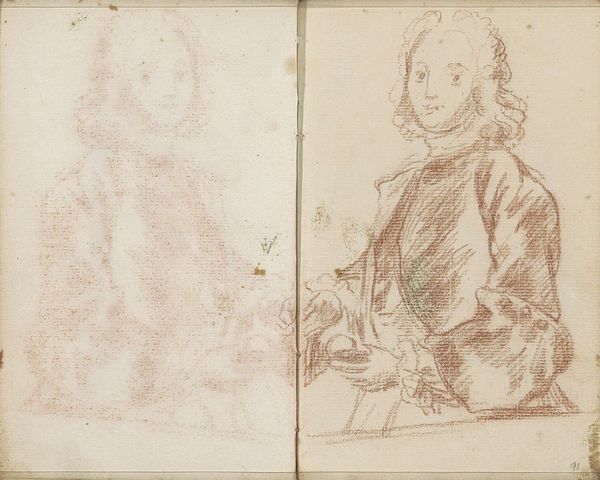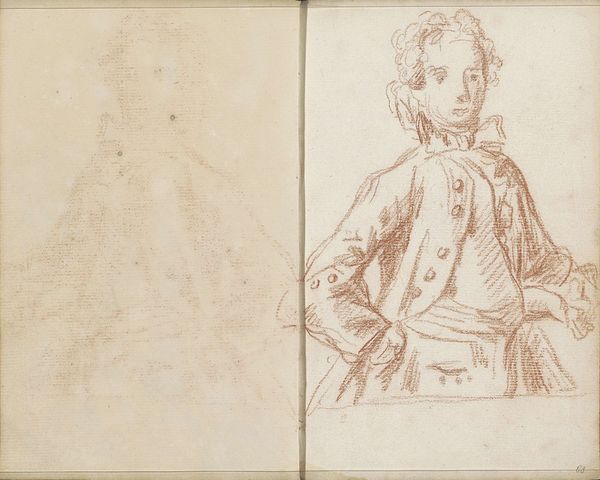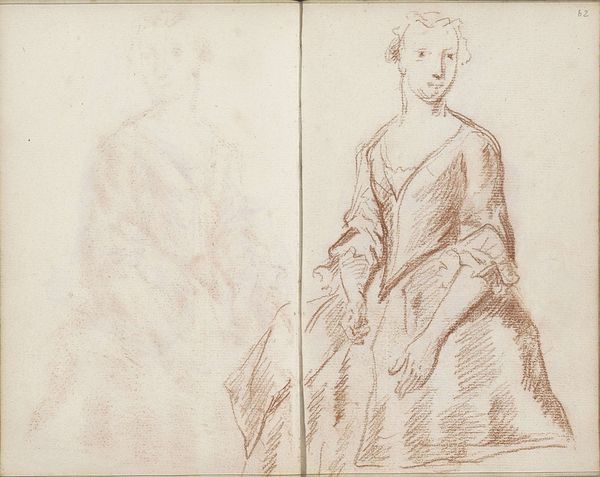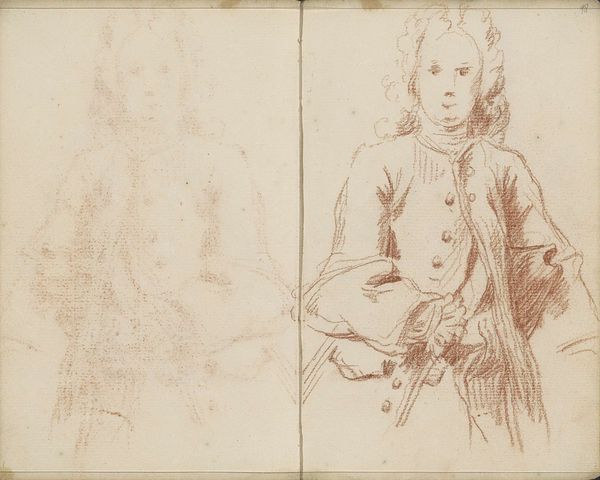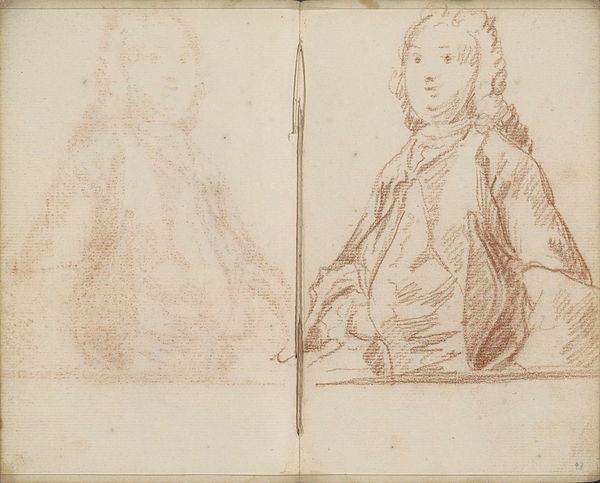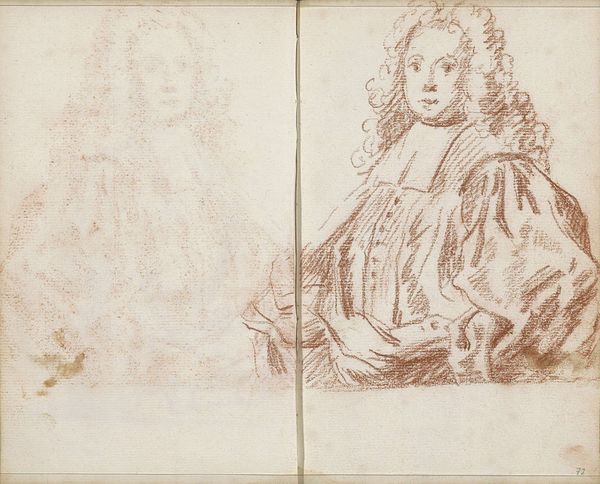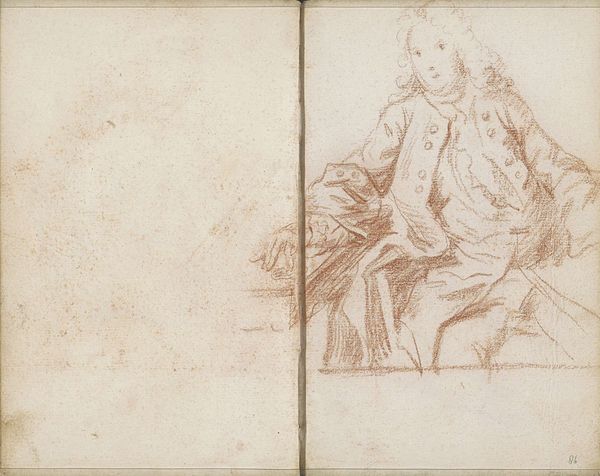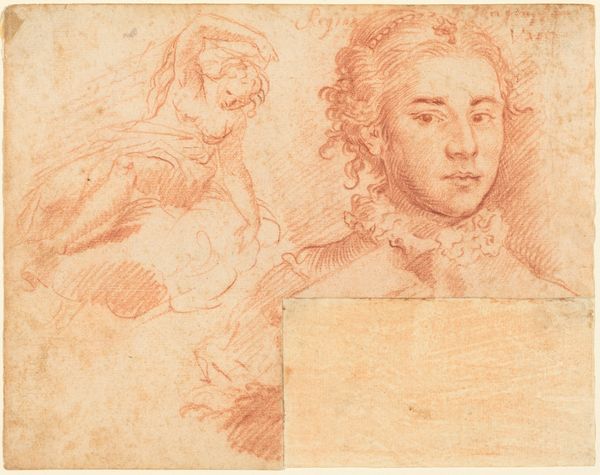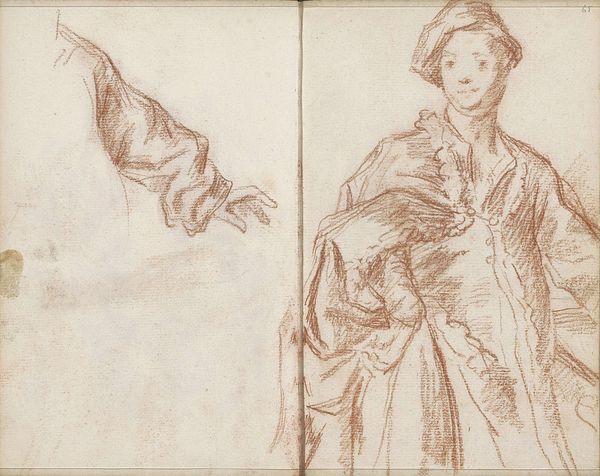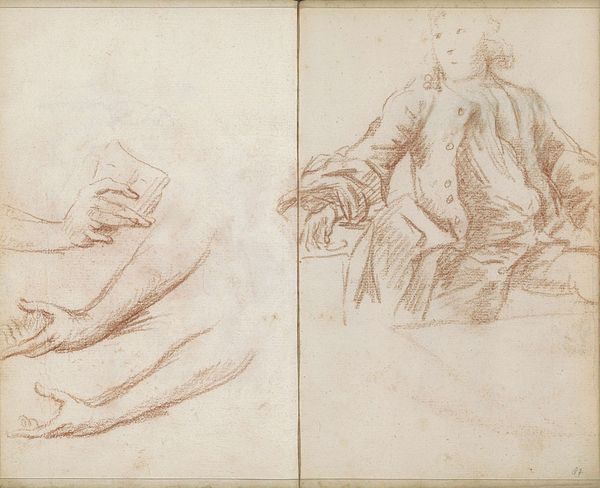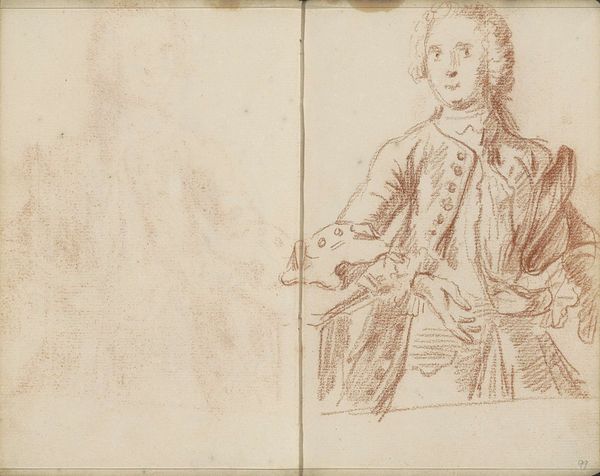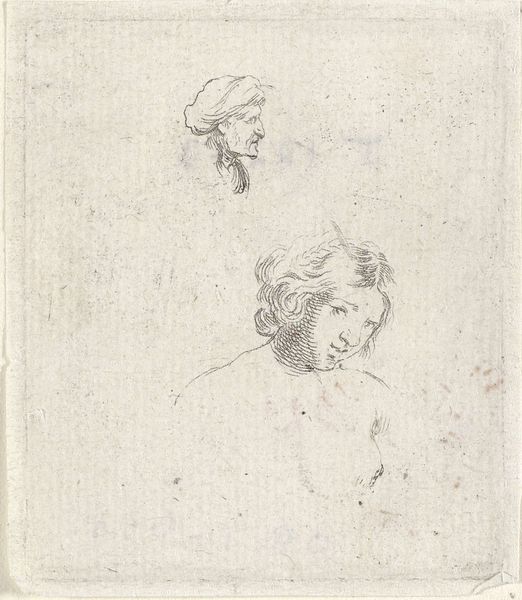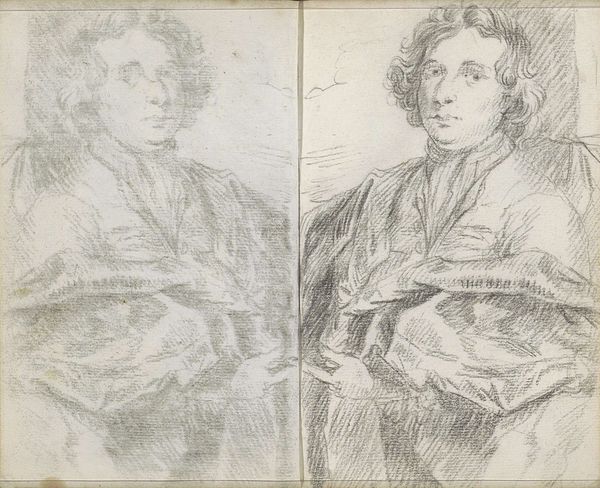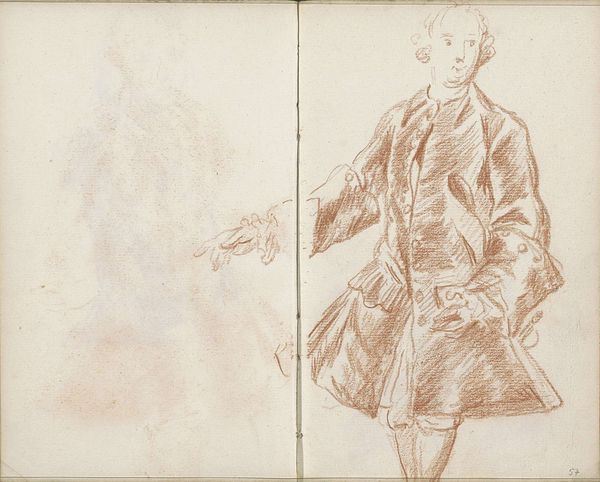
drawing, pencil
#
portrait
#
drawing
#
toned paper
#
light pencil work
#
baroque
#
pen sketch
#
pencil sketch
#
sketch book
#
personal sketchbook
#
ink drawing experimentation
#
pen-ink sketch
#
pencil
#
sketchbook drawing
#
sketchbook art
Copyright: Rijks Museum: Open Domain
Editor: This is "Standing Man," a pencil drawing from sometime between 1710 and 1772 by Petrus Johannes van Reysschoot. The drawing appears to be from a sketchbook, and the portrait captures a man with long curly hair and formal attire. It’s interesting, but what story do you see being told? Curator: Consider the wig. Its presence isn't merely decorative; it speaks of social standing, of belonging to a specific class and era. Hair carries immense symbolic weight, doesn't it? Think of Samson's strength, or mourning rituals where hair is often cut. The way this man chooses to present himself—the wig, the robe—communicates power, authority, and perhaps even adherence to certain ideals. What do you think the artist is exploring by sketching him in this particular garb? Editor: Maybe he’s interested in exploring power and identity through these symbols. There’s another fainter sketch on the facing page; maybe it was about exploring and playing with the semiotics of presentation? Curator: Exactly! And notice the open sketchbook format itself. Doesn't it evoke a sense of immediacy, of the artist caught in the act of observing and interpreting? It suggests an interest not just in the outward appearance, but in the psychological depth hinted at through posture and dress. Could the facing sketch be seen as a kind of "shadow self", a discarded possibility, a fleeting impression? Editor: That's a compelling idea, the 'shadow self'. So the symbols aren't just about external representation but also internal struggles and possibilities. It gives it a very modern feeling. Curator: Precisely. Even a seemingly simple sketch like this can unlock layers of meaning, reminding us that images, particularly those of people, are never truly neutral. They are laden with cultural memory and the weight of individual experience. Editor: That's fascinating; it makes me look at portraiture so differently. Curator: Me too, still! Each artwork becomes a lens through which we can examine not only the past but also our present understanding of identity and representation.
Comments
No comments
Be the first to comment and join the conversation on the ultimate creative platform.
